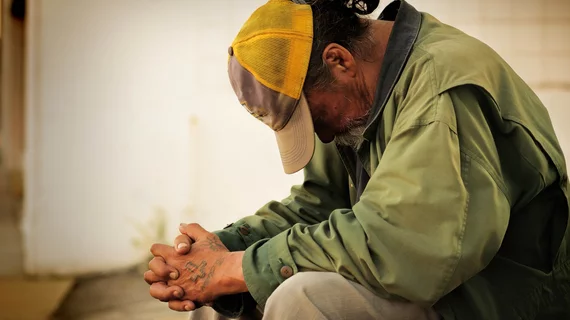Study reveals major gaps in CV care between homeless, non-homeless adults
Homeless people hospitalized for heart attacks are far less likely than their non-homeless counterparts to undergo angiography, percutaneous coronary intervention (PCI) or coronary artery bypass graft (CABG) surgery, according to research published in JAMA Internal Medicine this month. They also see higher death rates across the board.
Rishi K. Wadhera, MD, MPP, of Beth Israel Deaconess Medical Center and Harvard Medical School, and colleagues wrote in the journal that on any given night in the U.S., more than half a million people struggle to find somewhere to sleep. Those individuals already experience a higher burden of medical comorbidities than their peers, and that burden is only compounded by steeper rates of nontraditional CV risk factors, like depression and substance use disorder, in the population.
“Furthermore, financial and structural barriers impede homeless persons’ access to healthcare services, resulting in delayed and fragmented care and suboptimal treatment of these risk factors,” Wadhera et al. wrote. “Estimates suggest that cardiovascular mortality rates among homeless individuals are up to threefold higher than those of non-homeless individuals.”
For their retrospective analysis, the researchers considered all hospitalizations for CV conditions among homeless adults (24,890) and non-homeless adults (1,827,900) in New York, Massachusetts and Florida between 2010 and 2015. Homeless individuals accounted for 1.3% of a total 1,852,790 hospitalizations during that period.
More homeless men than women were admitted to the hospital, and on average patients who were homeless were younger than those who weren’t (65 years vs. 72 years, respectively). Homeless adults were also more likely than non-homeless adults to be black (38.6% vs. 15.6%) and insured by Medicaid (49.3% vs. 8.5%).
After adjusting for demographics, insurance status and clinical comorbidities, Wadhera and colleagues found that homeless adults hospitalized for acute MI were less likely to undergo coronary angiography compared with their non-homeless counterparts (39.5% vs. 70.9%), as well as PCI (24.8% vs. 47.4%) and CABG (2.5% vs. 7.0%). Homeless adults hospitalized for stroke were less likely than their non-homeless peers to undergo cerebral angiography (2.9% vs. 9.5%) but were just as likely to receive thrombolytic therapy (4.8% vs. 5.2%).
Considering a cohort of cardiac arrest patients, the authors reported that homeless victims were less likely than non-homeless victims to undergo coronary angiography (10.1% vs. 17.6%) and PCI (0.0% vs. 4.7%). Mortality rates for stroke and cardiac arrest were higher in homeless patients (8.9% vs. 6.3% and 76.1% vs. 57.4%, respectively), but were the same for heart failure (1.6% vs. 1.6%).
“There are several potential explanations as to why homeless patients receive lower-intensity care for acute cardiovascular conditions,” Wadhera and co-authors wrote. “Most concerning is the possibility that homeless patients are treated differently for nonclinical reasons, as suggested by the within-hospital differences in care observed in our study.
“It is possible that the stigma associated with homelessness also contributes to disparities in care during a hospitalization. These differences in procedural care were not primarily a problem of insurance coverage, given that only a small minority of the homeless individuals in our study were uninsured.”
The team said further qualitative research is required for the scientific community to better understand how healthcare professionals make decisions when it comes to caring for homeless patients. For now, though, they suggested public health and policy efforts to reduce disparities.

